There’s a specific type of work wear designed for original work. You have plans to buy work clothes for your employees. There are a few important things you need to consider first. For example, one of the most important considerations has to be the type of work your employees do.
Photo by Mufid Majnun on Unsplash
- Work wear
For example, people working in construction required to wear construction work clothes. Those working in factories and industrial facilities must wear industrial work clothes. They designed these types of work wear for the type of work environment they are in. This type of clothing is fire and water resistant. Their clothing protects them from injuries and accidents while performing their daily tasks.
You should also keep the weather and season in mind when shopping for safety work clothes for your employees. They should provide coveralls during hot summers and cold winters. In summer, it should provide loose and breathable industrial and corporate work clothes. However, during the cold winter months, you must provide your employees with winter overalls and work jackets.
By providing weather-friendly work wear, your employees can perform their tasks no matter the weather or season. It is also important that you consider the comfort of your employees in their overall.
Work wear
Studies show that comfort is one factor that influences the productivity of workers in the workplace. By providing comfortable clothes to your employees, you encourage them to work better and more efficiently. Ask your employees what kind of clothing they think they’ll be comfortable. Also, don’t forget to provide plus-size work wear for plus-sized workers.
Alsp Read: Railway Safety Workwear Set
We can also use work wear as a promotional and marketing tool. If you have plans to buy one; you need to consider the way they look as well. Branded work wear is an effective marketing tool that most business executives used to advertise their business in a cost-efficient manner.
If you plan to wear work clothes for this purpose, make sure they show attractive and noticeable. For those planning to buy work wear but don’t know where to find it. Try checking out work wear companies and stores in your area. If you can’t find it, why not buy work clothes online?
This post contains affiliate links at no additional cost to you. I will be compensated if you buy after clicking the link.
Workwear refers to clothing and apparel specifically designed and worn for work purposes, providing comfort, durability, and functionality in various industries and job roles. Workwear often tailored to meet the specific needs and safety requirements of different work environments. Here are some common types of workwear:
Workwear Clothing
- Work Shirts: Work shirts designed with durable fabrics and may feature reinforced stitching, multiple pockets for storage, and options for high-visibility or flame-resistant materials.
- Work Pants/Trousers: Work pants designed to withstand the demands of physical labor and often incorporate features like reinforced knees, multiple pockets, and durable fabrics that provide protection against hazards such as abrasions, cuts, or chemicals.
- Coveralls/Overalls: Coveralls or overalls are one-piece garments that provide full-body coverage and protection. They commonly worn in industries such as automotive, construction, and manufacturing, where workers require comprehensive protection against dirt, chemicals, or hazardous substances.
- Safety Vests: Safety vests, also known as high-visibility vests, worn in situations where visibility is crucial for worker safety. They are often fluorescent in color and feature reflective strips to enhance visibility, especially in low-light conditions.
- Work Jackets/Coats: Work jackets and coats designed to provide warmth, protection, and functionality in various work environments. They may have features such as water resistance, insulation, removable hoods, or multiple pockets for tools or equipment storage.
- Work Boots/Shoes: Work boots or shoes designed to provide foot protection and support in demanding work environments. They often have features like reinforced toe caps, slip resistance, puncture resistance, and electrical hazard protection.
- Personal Protective Equipment (PPE): Workwear also includes personal protective equipment such as helmets, safety glasses, gloves, and respiratory masks. PPE is essential for safeguarding workers from specific hazards encountered in their work environments.
When choosing workwear, it’s important to consider the specific requirements of your industry, job tasks, and safety regulations. Look for garments made from high-quality materials that offer comfort, durability, and functionality. Pay attention to features like reinforced stitching, pockets, visibility options, and any additional safety requirements that may be necessary for your work environment.
Aprons & Tabards Work wear
Workwear aprons and tabards protective garments worn by individuals in various industries to safeguard their clothing and provide functionality during work activities. These garments commonly used in professions such as hospitality, food service, healthcare, cleaning, and manufacturing. Here’s some information about workwear aprons and tabards:
- Aprons: Aprons worn over regular clothing and typically cover the front of the body. They designed to protect the wearer’s clothes from dirt, stains, spills, and other potential hazards. Aprons commonly used in kitchens, restaurants, cafes, and catering businesses to keep the chef’s or cook’s uniform clean. They come in different styles and materials, such as bib aprons, waist aprons, cobbler aprons, and bistro aprons, to suit specific work requirements.
- Tabards: Tabards are similar to aprons but provide full coverage to both the front and back of the wearer. They are often sleeveless and have wide shoulder straps that cross over the back, allowing for ease of movement. Tabards commonly used in industries that involve cleaning, maintenance, and industrial work. They provide protection against spills, dirt, and potential abrasions.
- Materials: Workwear aprons and tabards typically made from durable and easy-to-clean materials such as cotton, polyester, poly-cotton blends, or PVC-coated fabrics. The choice of material depends on the specific industry requirements. For example, in the food industry, where hygiene is crucial, aprons made from waterproof and easily washable materials preferred.
- Features: Workwear aprons and tabards often include additional features to enhance their functionality. These features may include pockets for storing tools, adjustable neck straps or waist ties for a better fit, and reinforced areas to withstand heavy use. Some aprons and tabards may also have specific design elements, such as color-coded options for different roles or departments within an organization.
- Customization: Many companies choose to customize their workwear aprons and tabards with branding elements such as logos, company names, or employee names. This customization helps to promote brand visibility and fosters a sense of identity among the employees.
BLAKLADER 3061 WELDING APRON
- Durable welding apron with special reinforcing fabric that repels molten metal.
- Protects against iron, zinc and aluminium and is industrially washable.
- Reinforcing materials that withstand melted metals, iron, zinc and aluminum.
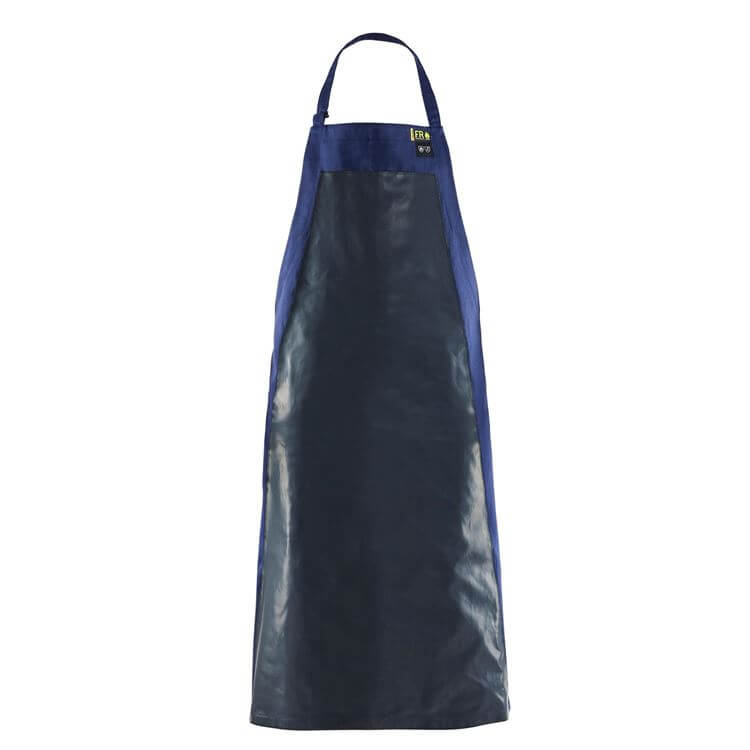
When selecting workwear aprons and tabards, it’s important to consider the specific work environment, tasks involved, and the level of protection required. Ensuring proper fit, comfort, and durability are also essential factors to keep in mind.
Base Layers Work wear
Workwear base layers garments worn underneath the main workwear to provide additional comfort, insulation, and moisture management. They designed to regulate body temperature, wick away sweat, and provide an extra layer of insulation in cold environments. Here’s some information about workwear base layers:
- Purpose: The primary purpose of workwear base layers is to provide thermal regulation. In colder conditions, base layers help retain body heat by trapping a layer of warm air against the skin. They also wick away moisture from the body, keeping the wearer dry and comfortable. In warmer climates, base layers with moisture-wicking properties help keep the body cool by allowing sweat to evaporate quickly.
- Materials: Workwear base layers typically made from synthetic materials or natural fibers. Synthetic materials such as polyester or nylon known for their moisture-wicking properties, quick drying times, and durability. Natural fibers like merino wool are excellent at regulating temperature, providing insulation, and resisting odors.
- Styles: Workwear base layers come in various styles to suit different needs and preferences. Common types include long-sleeved tops, short-sleeved tops, sleeveless tops, leggings, and long johns. The style chosen depends on the level of insulation required and the specific work environment.
- Features: Workwear base layers often have features that enhance their performance. These can include flatlock seams that minimize chafing and irritation, tagless labels for added comfort, and strategic mesh panels for increased breathability in key areas. Some base layers also have antimicrobial treatments to reduce odor-causing bacteria.
- Layering System: Workwear base layers typically part of a layering system, where multiple layers of clothing worn to adapt to changing weather conditions. The layering system consists of a base layer, mid-layer (such as a fleece or sweatshirt), and an outer layer (such as a jacket). This system allows the wearer to add or remove layers as needed to maintain comfort throughout the workday.
- Fit: It is important for workwear base layers to have a snug but not restrictive fit. A close-fitting base layer helps trap air for insulation and allows for effective moisture wicking. However, it should still allow for freedom of movement and not restrict the wearer’s range of motion.
TRANEMO 6310 MERINO RX FR BOXER SHORTS
- Inherent Flame Retardant boxer shorts in soft Merino wool and FR-viscose.
- Elasticated waist.
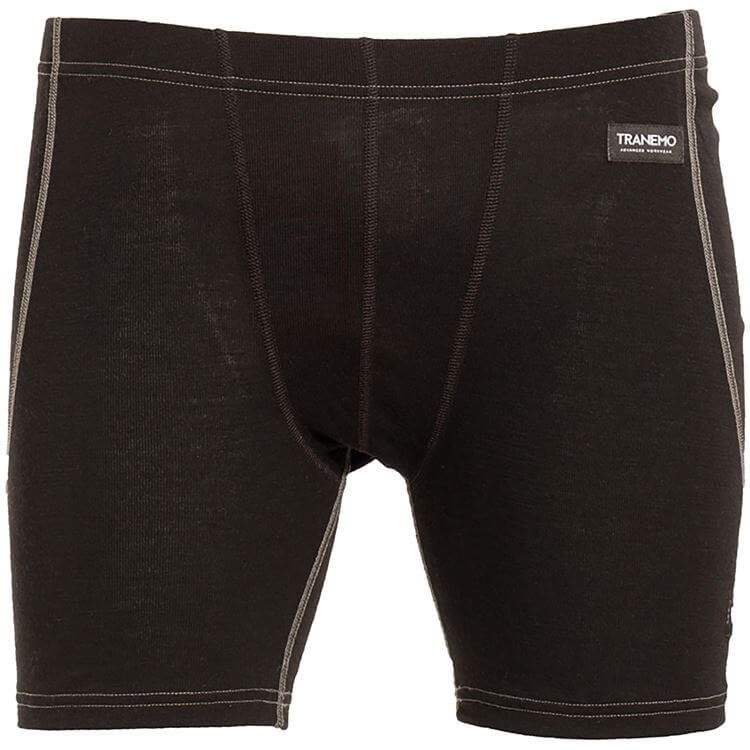
When selecting workwear base layers, consider the climate, type of work, and personal preferences. It’s also important to choose high-quality materials that are suitable for the intended use and provide the desired level of comfort and performance.
Body Warmers Work wear
Workwear body warmers, also known as workwear vests or gilets, sleeveless garments designed to provide an additional layer of warmth and insulation to the core of the body. They commonly used in various industries and work environments where additional warmth required without restricting arm movement. Here’s some information about workwear body warmers:
- Purpose: The primary purpose of workwear body warmers is to provide warmth to the upper body while keeping the arms free for unrestricted movement. They particularly useful in situations where workers need to maintain mobility or perform tasks that require dexterity while still staying war Materials: Workwear body warmers typically made from durable and insulating materials. Common materials used include polyester, nylon, fleece, and quilted fabrics. These materials provide insulation, wind resistance, and often have water-repellent or water-resistant properties.
- Insulation: Body warmers designed with various insulation options to provide different levels of warmth. Some vests may have synthetic insulation, such as polyester fill, which offers good insulation even when wet. Others may feature natural down or synthetic down alternatives, which provide excellent warmth-to-weight ratios.
- Design: Workwear body warmers come in a range of designs and features to suit different work requirements. They typically have a front zipper or button closure for easy wear and removal. Pockets commonly included for storing tools or keeping hands warm. Some vests may have additional features like adjustable hems, reflective trims for increased visibility, or integrated safety harness compatibility for specific industries.
- Layering: Workwear body warmers often worn as part of a layering system. They can worn over base layers or shirts and under outer layers such as jackets or coats, depending on the weather conditions and the level of warmth required. This layering system allows for flexibility in adapting to changing temperatures throughout the workday.
- High-Visibility Options: In industries where high visibility is crucial, workwear body warmers are available in high-visibility colors, typically fluorescent yellow or orange, with reflective strips. These vests comply with safety regulations and help enhance visibility in low-light or hazardous work environments.
CARHARTT MONTANA BODYWARMER
- Bodywarmer with water repellent finish and Wind Fighter technology .
- Relaxed fit.
- Rain Defender® – durable water repellent finish.
- Wind Fighter® – Tames the wind.
- Mock neck.
- Dual entry, secure chest pocket with snap closure and zipped side entry.
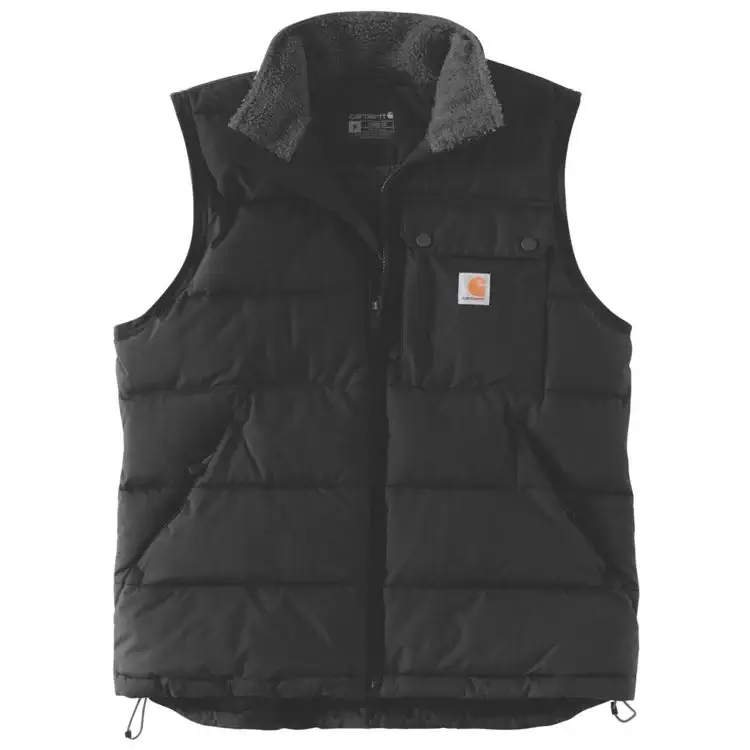
When selecting workwear body warmers, consider the climate, work environment, and the level of insulation required. It’s important to choose a size and fit that allows for comfortable movement and layering. Additionally, look for quality construction and materials to ensure durability and longevity.
Headwear Work wear
Workwear headwear refers to the hats, caps, and other protective headgear worn in various industries to provide safety, comfort, and functionality. These headwear options designed to protect the wearer’s head from potential hazards, such as falling objects, sun exposure, or extreme weather conditions. Here’s some information about workwear headwear:
- Hard Hats: Hard hats are one of the most common types of workwear headwear, particularly in construction, manufacturing, and other industries where there is a risk of head injuries from falling objects or impacts. They made of a rigid outer shell with a suspension system inside to absorb and distribute the force of impact. Hard hats often have adjustable straps to ensure a secure fit.
- Bump Caps: Bump caps are a lighter alternative to hard hats. They typically made of a softer material, such as plastic or foam, and provide protection against minor bumps and scrapes. Bump caps commonly used in industries where there a lower risk of severe impact but still a need for head protection, such as maintenance work or warehouse operations.
- Safety Helmets: Safety helmets specialized headgear used in industries like oil and gas, mining, and construction, where there are specific hazards like electrical shock, high-temperature environments, or chemical exposure. These helmets designed to provide additional protection beyond the basic hard hat and may include features like integrated face shields, hearing protection, or respiratory equipment compatibility.
- Caps and Hats: Caps and hats worn in a wide range of industries, providing protection from the sun, heat, or cold weather, as well as serving as a form of identification or branding. They typically made from durable materials like cotton, polyester, or a blend of both. Some caps may also have a rigid brim or include features like ventilation holes or sweatbands for added comfort.
- High-Visibility Headwear: High-visibility headwear, such as fluorescent-colored caps or hats with reflective tape, is common in industries where visibility is crucial, such as construction, road work, or airport operations. These headwear options help improve the wearer’s visibility, especially in low-light conditions or areas with moving vehicles.
- Accessories: Workwear headwear may also include accessories like neck shades, face covers, or sweatbands. These accessories provide additional protection from the sun, wind, or sweat management, enhancing overall comfort during work activities.
TRANEMO 6307 ARC WOOL HELMET LINER
- Inherent flame retardant beanie hat to used under a helmet, in a thinner tricot in soft Merino wool and FR-viscose.

When selecting workwear headwear, it’s important to consider the specific hazards and requirements of the industry or work environment. Ensure that the headwear meets relevant safety standards and regulations. Comfort, adjustability, and breathability are also important factors to consider to ensure that the headwear is suitable for extended use in various conditions.
Work wear Jackets
Workwear jackets garments designed to provide protection, warmth, and functionality in various work environments. They specifically designed to withstand the demands of the job and provide durability, comfort, and safety features. Here’s some information about workwear jackets:
- Material: Workwear jackets typically made from durable and rugged materials to withstand the rigors of the workplace. Common materials include cotton, polyester, nylon, canvas, or a combination of these. The choice of material depends on the specific industry requirements, such as resistance to abrasion, water, fire, or chemicals.
- Weather Protection: Workwear jackets often incorporate weather-resistant features to protect the wearer from the elements. This can include waterproof or water-resistant coatings, windproofing, and insulation to provide warmth in colder conditions. Some jackets may have removable or stowable hoods to offer additional protection during inclement weather.
- Safety Features: Depending on the industry, workwear jackets may include specific safety features. This can include high-visibility accents or reflective tape to enhance visibility in low-light conditions. Additionally, jackets designed for hazardous environments may have flame-resistant properties or equipped with specific safety certifications to meet industry standards.
- Pockets and Storage: Workwear jackets often include multiple pockets and storage options to keep tools, equipment, or personal items easily accessible. This can include chest pockets, sleeve pockets, or interior pockets with closures such as zippers or hook-and-loop fasteners. Some jackets may also have additional features like pen holders, D-rings, or tool loops for added functionality.
- Fit and Mobility: Workwear jackets designed to provide a comfortable fit while allowing for ease of movement. They often have features like adjustable cuffs, waistbands, or hems to customize the fit and prevent drafts. Raglan or articulated sleeves may used to enhance freedom of movement in the arms and shoulders.
- Design and Style: Workwear jackets come in various designs and styles to suit different work environments and preferences. Some common styles include bomber jackets, parkas, softshell jackets, or fleece jackets. The design may also incorporate company logos, reflective accents, or other branding elements.
- Layering Compatibility: Workwear jackets often designed to be worn as part of a layering system, allowing for versatility in different weather conditions. They can worn over base layers or mid-layers, providing an additional outer barrier of protection and insulation.
FRISTADS HIGH VIS AIRTECH® WINTER JACKET 4035
- Fully lined.
- Detachable lined hood with adjustable strap and drawstring.
- Fleece-lined collar.
- Reflective detail on shoulders.
- Front placket opening with zip to top of collar and concealed snap fastening.
- Two chest pockets with zip.
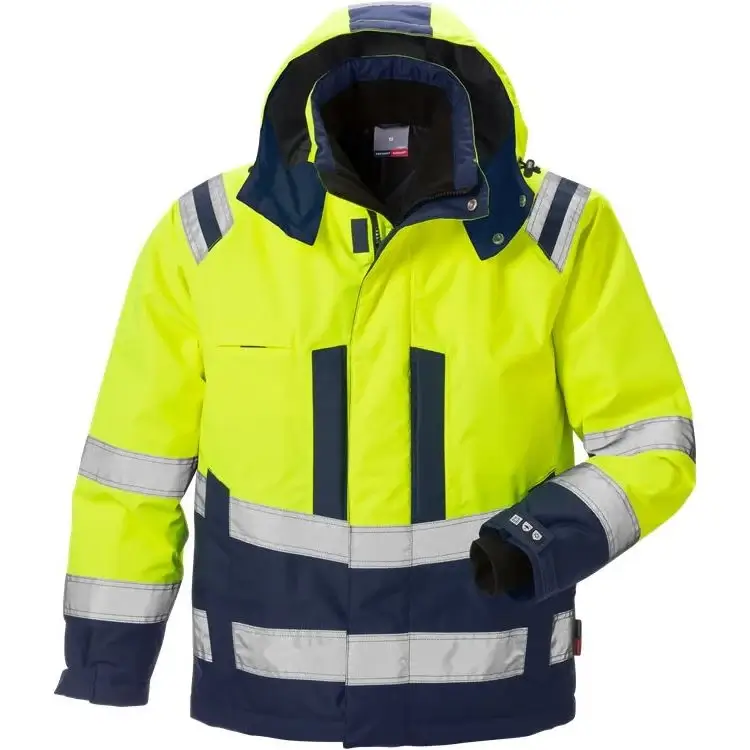
When selecting workwear jackets, consider the specific work environment, potential hazards, and weather conditions. It’s important to choose a jacket that meets safety requirements and provides the necessary functionality for the job at hand. Durability, comfort, and ease of maintenance are also important factors to consider for long-lasting and reliable workwear.
Work wear Overalls
Workwear overalls, also known as coveralls or boiler suits, one-piece garments designed to provide full-body protection in various work environments. They commonly used in industries such as construction, manufacturing, automotive, agriculture, and maintenance. Here’s some information about workwear overalls:
- Full Body Protection: Workwear overalls offer comprehensive coverage for the entire body, including the torso, arms, and legs. They designed to protect the wearer’s regular clothing from dirt, dust, stains, chemicals, and other potential hazards encountered in the workplace.
- Materials: Workwear overalls typically made from durable and hard-wearing fabrics such as cotton, polyester, or a blend of both. The fabric choice depends on the specific work requirements, such as flame resistance, chemical resistance, or durability against abrasions.
- Closure and Fastening: Overalls typically feature a front closure system that can include zippers, buttons, or snaps. This allows for easy wearing and removal of the garment. Some overalls also have additional closures, such as elastic waistbands or adjustable straps, to provide a secure and comfortable fit.
- Pockets: Workwear overalls often include multiple pockets, providing convenient storage for tools, personal belongings, or small equipment. These pockets may be located on the chest, hips, or thighs, and can have closures like zippers, flaps, or hook-and-loop fasteners for added security.
- Safety Features: Depending on the industry and specific job requirements, workwear overalls may have additional safety features. These can include reflective tape or accents for increased visibility in low-light conditions, reinforced knees for added durability and protection, or even specific certifications for flame resistance or chemical protection.
- Comfort and Mobility: Workwear overalls designed to provide comfort and allow for ease of movement. They typically have a loose fit, allowing the wearer to move freely and perform their tasks without restrictions. Some overalls may feature elasticated or adjustable cuffs, waistbands, or back panels to enhance comfort and flexibility.
- Layering Compatibility: Overalls often designed to worn over regular clothing or as part of a layering system. This allows for flexibility in adapting to different weather conditions or work environments. In colder climates, workers can wear thermal base layers or mid-layers underneath the overalls for added insulation.
BLAKLADER 6725 WINTER HI VIS OVERALLS
- Breathable wind and water-tight material, taped seams, mesh panel at armpit and shoulder blade.
- Dark colour field in high grime-exposure sections, ventilation inder sleeves.
- Quilt lining.
- Two-way zip along entire side seam.
- Bellow on back.
- Loops on both sides of chest for placement of microphone and other accessories.

When selecting workwear overalls, it’s important to consider the specific hazards and requirements of the job. Look for overalls that meet safety standards and regulations relevant to your industry. Pay attention to the fit, comfort, and durability of the garment, as well as any specific features needed for your work environment.
Polo Shirts Work wear
Workwear polo shirts are versatile and professional garments commonly worn in various industries and work settings. They offer a balance between comfort and a more formal appearance, making them a popular choice for many businesses. Here’s some information about workwear polo shirts:
- Design: Workwear polo shirts feature a classic design with a collar, a placket with two or three buttons at the neckline, and short sleeves. The collar and placket lend a more polished and professional look compared to regular t-shirts, while the short sleeves provide comfort and flexibility.
- Materials: Workwear polo shirts typically made from durable and breathable materials. Common fabric choices include cotton, polyester, or a blend of both. Cotton provides softness and breathability, while polyester offers moisture-wicking properties and improved durability.
- Comfort and Fit: Workwear polo shirts designed to provide a comfortable fit while allowing freedom of movement. They usually cut with a relaxed fit that isn’t overly tight or loose. Look for polo shirts with features like side vents or rib-knit cuffs for added comfort and flexibility.
- Colors and Branding: Workwear polo shirts are available in various colors to suit different corporate identities or branding requirements. Common options include solid colors, as well as two-tone or contrast color combinations. Some polo shirts may also feature company logos or emblems, either embroidered or printed, to promote brand visibility and identification.
- Layering: Workwear polo shirts versatile and can easily layered with other garments. They can worn as standalone shirts or combined with sweaters, jackets, or vests, depending on the weather or work environment. This allows for flexibility in adapting to changing conditions throughout the day.
- Durability and Maintenance: Workwear polo shirts designed to withstand the demands of regular use and washing. Look for shirts with reinforced stitching on stress points, such as the collar and buttons. Check the care instructions to ensure the shirt’s durability and to maintain its appearance and fit over time.
- Safety Considerations: In certain industries, high-visibility or flame-resistant polo shirts may required to meet safety regulations. These specialized polo shirts designed with reflective tape or flame-resistant materials to enhance visibility or provide protection in hazardous work environments.
DASSY TRAXION POLO SHIRT
- Short sleeves with a two button placket.
- Reflective details.
- Contrast stitching.
- Printed neck label for extra comfort.
- Hidden mesh ventilation under collar.
- Part of the Dassy D-Flex range.

When selecting workwear polo shirts, consider the specific requirements of your industry, corporate dress code, and any safety regulations. Choose shirts made from quality materials that offer comfort, durability, and easy maintenance. Pay attention to the fit and appearance to ensure a professional and polished look.
Work wear Shirts
Workwear shirts garments designed for various industries and work environments, providing comfort, durability, and functionality. They typically worn by employees in sectors such as construction, manufacturing, hospitality, healthcare, and more. Here’s some information about workwear shirts:
- Styles: Workwear shirts come in different styles to suit various needs and preferences. Common styles include button-down shirts, long-sleeved shirts, short-sleeved shirts, and polo shirts. The style chosen depends on the level of formality required and the specific work environment.
- Materials: Workwear shirts made from durable materials that can withstand the demands of the job. Common fabric choices include cotton, polyester, or a blend of both. Cotton offers breathability and comfort, while polyester provides durability and resistance to wrinkles and shrinking. Some workwear shirts may also have moisture-wicking properties to keep the wearer dry in active or high-sweat environments.
- Comfort and Fit: Workwear shirts should provide a comfortable fit that allows for ease of movement. They often have a relaxed or regular fit to ensure freedom of motion. Features like back pleats or gussets can enhance comfort by providing additional room in critical areas.
- Durability: Workwear shirts designed to be durable and long-lasting. Look for shirts with reinforced stitching, double- or triple-stitched seams, and bar-tacked stress points. These features contribute to the overall durability and resistance to wear and tear.
- Functional Features: Workwear shirts often incorporate functional features that enhance their utility. This can include chest pockets for storing small tools or pens, pen or pencil holders, or loops for attaching ID badges or other accessories. Some shirts may have hidden buttons or button-down collars for a more professional appearance.
- High-Visibility Options: In industries where visibility is crucial, such as construction or road work, workwear shirts are available in high-visibility colors, often fluorescent yellow or orange, with reflective tape or accents. These shirts comply with safety regulations and help enhance visibility in low-light or hazardous work environments.
- Branding and Customization: Workwear shirts can customized with company logos, names, or emblems through embroidery or printing. This customization helps promote brand visibility and identification.
CARHARTT SHERPA LINED PLAID SHIRT JACKET
- Sherpa lined plaid shirt jacket.
- Relaxed fit.
- Two-piece stand collar.
- Long Sleeve.
- Two chest pockets with flaps and snap closures.
- Two front welt pockets.
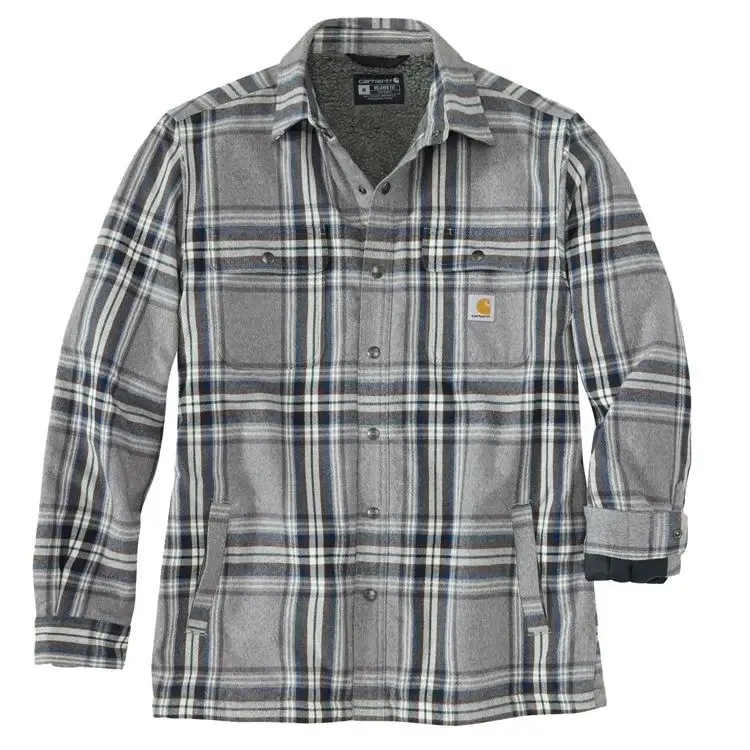
When selecting workwear shirts, consider the specific requirements of your industry, work environment, and corporate dress code. Look for shirts made from quality materials that offer both comfort and durability. Pay attention to features that enhance functionality and safety if needed. Finally, consider any customization options to align with your company’s branding.
Sweatshirts Work wear
Workwear sweatshirts are comfortable and practical garments designed for various work environments. They provide warmth, protection, and ease of movement, making them popular choices for industries such as construction, manufacturing, warehousing, and outdoor work. Here’s some information about workwear sweatshirts:
- Material: Workwear sweatshirts typically made from soft and warm materials such as cotton or polyester fleece. Cotton provides comfort and breathability, while polyester offers durability, moisture-wicking properties, and faster drying times.
- Warmth and Insulation: Sweatshirts designed to provide warmth and insulation in colder conditions. They are usually thicker than regular shirts and feature a brushed or fleece-lined interior for added insulation. Some sweatshirts may have rib-knit cuffs and waistbands to trap heat and prevent cold air from entering.
- Comfort and Fit: Workwear sweatshirts designed for comfort and ease of movement. They typically have a relaxed fit that allows for layering underneath and unrestricted arm movement. Look for sweatshirts with raglan sleeves or articulated designs to enhance flexibility and range of motion.
- Features: Workwear sweatshirts often include practical features for enhanced functionality. This can include a front kangaroo pocket for hand warming or storage of small items, a chest pocket for easy access to tools or a phone, or a zippered closure for adjustable ventilation.
- High-Visibility Options: In industries where visibility is crucial, workwear sweatshirts are available in high-visibility colors with reflective tape or accents. These sweatshirts meet safety regulations and help enhance visibility in low-light or hazardous work environments.
- Layering Compatibility: Sweatshirts commonly worn as a mid-layer garment, providing insulation and warmth between a base layer and an outer layer such as a jacket or coat. This layering system allows for adaptability to changing weather conditions throughout the workday.
- Branding and Customization: Workwear sweatshirts can often customized with company logos, names, or emblems through embroidery or printing. This customization helps promote brand visibility and identification.
CARHARTT WIND FIGHTER HOODED SWEATSHIRT
- Full length front zip.
- Three piece hood with draw cord.
- Left chest pocket with zip closure.
- Two front handwarmer pockets.
- Triple stitched main seams.
- Elastane reinforced rib on hem and sleeve cuffs.
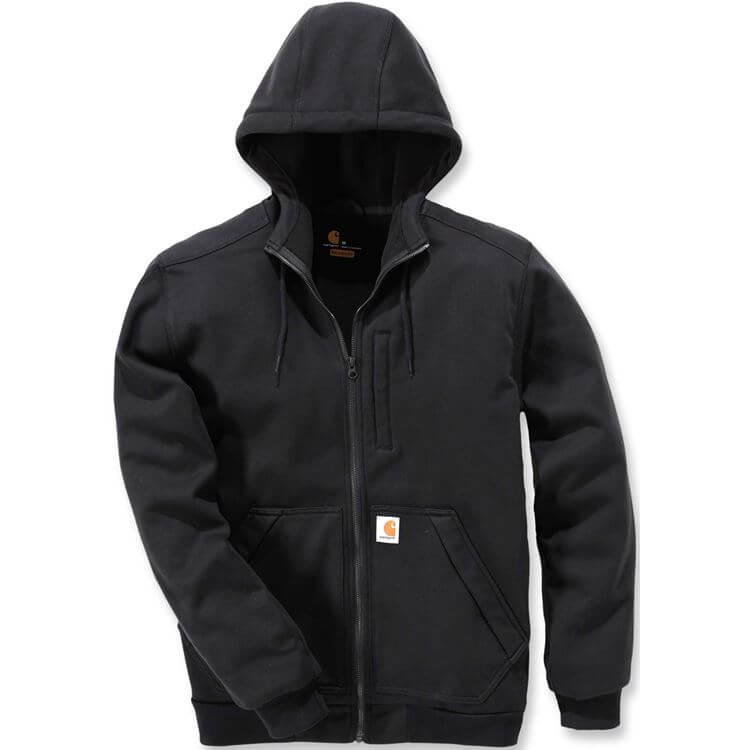
When selecting workwear sweatshirts, consider the specific requirements of your industry and work environment. Look for sweatshirts made from high-quality materials that offer both warmth and durability. Consider features that enhance functionality and safety, if needed. Pay attention to the fit and comfort, ensuring that the sweatshirt allows for easy movement and layering.
Work wear T Shirts
Workwear T-shirts are versatile and comfortable garments commonly worn in various work environments. They provide a casual and breathable option for industries such as construction, manufacturing, hospitality, healthcare, and more. Here’s some information about workwear T-shirts:
- Design: Workwear T-shirts typically have a classic design with short sleeves and a crew neck. They offer a relaxed and casual look while providing comfort and ease of movement.
- Materials: Workwear T-shirts made from durable and breathable materials. Common fabric choices include cotton, polyester, or a blend of both. Cotton provides softness and breathability, while polyester offers moisture-wicking properties and improved durability. Some T-shirts may have additional features like antimicrobial properties to combat odors or UV protection for outdoor work.
- Comfort and Fit: Workwear T-shirts designed for comfort, allowing freedom of movement throughout the workday. They usually have a relaxed or regular fit that isn’t overly tight or loose. Look for T-shirts with features like side seams or shoulder-to-shoulder taping for added comfort and durability.
- Durability: Workwear T-shirts designed to withstand the demands of regular use and washing. Look for shirts with reinforced stitching on stress points like the collar and sleeves. Double- or triple-needle stitching can also enhance the durability of the T-shirt.
- Colors and Branding: Workwear T-shirts are available in various colors to suit different corporate identities or branding requirements. Common options include solid colors or two-tone combinations. Some T-shirts may also feature company logos or emblems, either embroidered or printed, to promote brand visibility and identification.
- Layering: Workwear T-shirts versatile and can easily layered with other garments. They can worn as standalone shirts or combined with jackets, vests, or sweatshirts depending on the weather or work environment. This allows for flexibility in adapting to changing conditions throughout the day.
- Safety Considerations: In certain industries, high-visibility T-shirts may required to meet safety regulations. These specialized T-shirts are available in bright colors with reflective tape or accents to enhance visibility in low-light or hazardous work environments.
CARHARTT T-SHIRT
- Relaxed fit.
- Short Sleeve.
- Rib knit crew neck.
- Chest pocket.
- Flat two needle coverstitch hem.

When selecting workwear T-shirts, consider the specific requirements of your industry, corporate dress code, and any safety regulations. Choose shirts made from quality materials that offer comfort, durability, and easy maintenance. Pay attention to the fit and appearance to ensure a professional and presentable look.
Trousers Work wear
Workwear trousers, also known as work pants or work trousers, designed to provide durability, functionality, and comfort in various work environments. They commonly worn in industries such as construction, manufacturing, utilities, maintenance, and more. Here’s some information about workwear trousers:
- Material: Workwear trousers typically made from sturdy and durable fabrics to withstand the demands of the job. Common materials include cotton, polyester, canvas, denim, or a blend of these. The choice of material depends on the specific industry requirements, such as resistance to abrasion, water, fire, or chemicals.
- Durability: Workwear trousers are designed to tough and long-lasting. Look for trousers with reinforced stitching, particularly in high-stress areas like the crotch, knees, and pockets. Double- or triple-stitched seams enhance durability and prevent tearing.
- Fit and Comfort: Workwear trousers should provide a comfortable fit that allows for ease of movement. They often have a relaxed or regular fit, providing room in the legs without being overly loose. Look for trousers with features like gusseted crotches or articulated knees, which enhance flexibility and prevent restriction.
- Pockets and Storage: Workwear trousers are designed with multiple pockets and storage options to keep tools, equipment, and personal items easily accessible. This can include front, back, and side pockets with closures like zippers, flaps, or hook-and-loop fasteners. Some trousers may also have tool loops or D-rings for attaching accessories.
- Reinforcements: Depending on the specific job requirements, workwear trousers may have reinforced areas for added protection and durability. This can include reinforced knees, which provide extra support and prevent wear, or reinforced seat areas for added resistance to abrasion.
- Safety Features: In certain industries, workwear trousers may incorporate safety features such as high-visibility accents or reflective tape. These features enhance visibility in low-light conditions, helping to improve safety on the job site.
- Weather Protection: Workwear trousers may include weather-resistant features to provide protection in adverse conditions. This can include water-resistant coatings or treatments to repel moisture, or the ability to accommodate additional layering for insulation in colder environments.
FRISTADS GEN Y CRAFTSMAN STRETCH TROUSERS 2530 CYD
- White – Special offer
- Stretch panels at front, back and legs.
- Two CORDURA® reinforced nail pockets, one with three smaller pockets and tool loops, one with one extra pocket and tool loops.
- Two bellowed front pockets
- Two side pockets, one with zip.
- D-ring under nail pocket.

When selecting workwear trousers, consider the specific work environment, potential hazards, and comfort requirements. Look for trousers made from high-quality materials that offer both durability and flexibility. Pay attention to the fit, ensuring they allow for ease of movement without being overly loose or restrictive. Consider the presence of pockets, reinforcements, and safety features based on your job requirements.
Work wear Vests
Workwear vests, also known as work vests or safety vests, sleeveless garments designed to provide visibility, functionality, and added protection in various work environments. They commonly worn in industries such as construction, road work, utilities, and other outdoor or high-visibility settings. Here’s some information about workwear vests:
- High-Visibility: Workwear vests often designed with high-visibility colors, typically fluorescent yellow, orange, or lime green. These colors are easily noticeable, especially in low-light conditions, helping to enhance visibility and reduce the risk of accidents.
- Reflective Tape: Many workwear vests feature reflective tape or bands that further enhance visibility. This reflective material reflects light, making the wearer more visible to others, such as drivers or colleagues, in dimly lit or nighttime environments.
- Design and Fit: Workwear vests typically designed with a sleeveless and loose-fitting style. This design allows for easy movement and layering over other garments. Some vests have adjustable straps or side closures to provide a secure and comfortable fit for different body sizes.
- Pockets and Storage: Workwear vests often include multiple pockets for convenient storage of tools, equipment, or personal belongings. These pockets may have closures such as zippers, hook-and-loop fasteners, or flaps to keep items secure.
- Safety Compliance: Workwear vests may need to meet specific safety standards and regulations depending on the industry and work environment. For example, in certain situations, the vests may require certifications such as ANSI/ISEA 107 or EN ISO 20471 for high-visibility and reflectivity.
- Additional Features: Some workwear vests may have additional features for specific job requirements. These can include ID badge holders, radio or communication device pockets, or utility loops for attaching equipment or accessories.
- Layering Compatibility: Workwear vests often designed to worn over other clothing as a top layer. They allow for easy layering with jackets, sweatshirts, or other outerwear to adapt to changing weather conditions or job tasks.
LEO W19 CLIFTON FR AST HIGH VIS VEST
- Velcro fastening at the centre front.
- Retromax fire retardant reflective tape.
- Length: 30″ – 32″ : 75 – 80cm.
- Dropped back hem.
- Covered seams to prevent flaming or moltern debris.
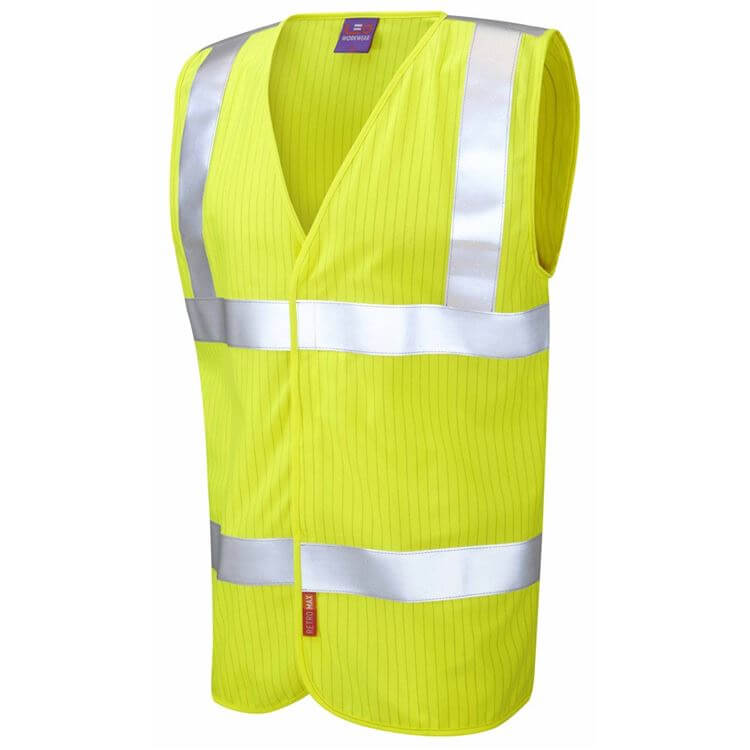
When selecting workwear vests, consider the specific safety requirements of your industry and work environment. Look for vests that comply with relevant safety standards and regulations. Pay attention to the visibility features, such as high-visibility colors and reflective tape, to ensure maximum visibility. Consider the fit, storage options, and any additional features that may enhance functionality for your specific job tasks.
Accessories Work wear
Workwear accessories are additional items or gear that complement workwear garments and enhance functionality, comfort, and safety in various work environments. Here are some common workwear accessories:
- Safety Gloves: Safety gloves are essential accessories in many industries, providing hand protection against cuts, abrasions, chemicals, or other hazards. They come in various materials and designs to suit different types of work.
- Hard Hats: Hard hats, also known as safety helmets, protect the head from falling objects, impacts, or electrical hazards. They commonly worn in construction, manufacturing, and industrial settings where head protection is crucial.
- Safety Glasses/Goggles: Safety glasses or goggles protect the eyes from dust, debris, chemicals, or other hazards. They are important for maintaining eye safety in industries such as construction, manufacturing, or laboratory work.
- Ear Protection: Ear protection accessories like earplugs or earmuffs help reduce exposure to loud noises and prevent hearing damage. They commonly used in industries with high noise levels, such as construction, manufacturing, or aviation.
- Tool Belts and Pouches: Tool belts and pouches provide convenient storage and easy access to tools, equipment, or small parts while working. They keep essential items within reach and help improve efficiency.
- Knee Pads: Knee pads offer cushioning and protection to the knees, reducing strain and potential injuries during tasks that involve kneeling or crawling, such as construction, flooring, or gardening.
- High-Visibility Gear: High-visibility accessories, including armbands, wristbands, or leg bands, can worn in addition to high-visibility clothing to further enhance visibility and safety, especially in low-light or high-traffic environments.
- Respiratory Masks: Respiratory masks or respirators are used in industries where workers may exposed to airborne contaminants, such as dust, fumes, or chemicals. They help filter the air and protect the wearer’s respiratory system.
- Knee Pads: Knee pads offer cushioning and protection to the knees, reducing strain and potential injuries during tasks that involve kneeling or crawling, such as construction, flooring, or gardening.
- Cooling Accessories: In hot work environments, cooling accessories like cooling towels, neck wraps, or cooling vests can help regulate body temperature and provide relief from heat stress.
TRANEMO 9179 ELECTRIC ARC HOOD
- Inherent Flame Retardant Electric Arc hood for helmet and face shield.
- Wind and water resistant.
- Made in softshell fabric with high arc protection.
- The hood also covers upper part of the chest and back and fits to visor.

These are just a few examples of workwear accessories. The specific accessories needed will depend on the industry, work tasks, and safety requirements of your workplace. Always ensure that the accessories you choose comply with relevant safety standards and regulations to ensure proper protection.
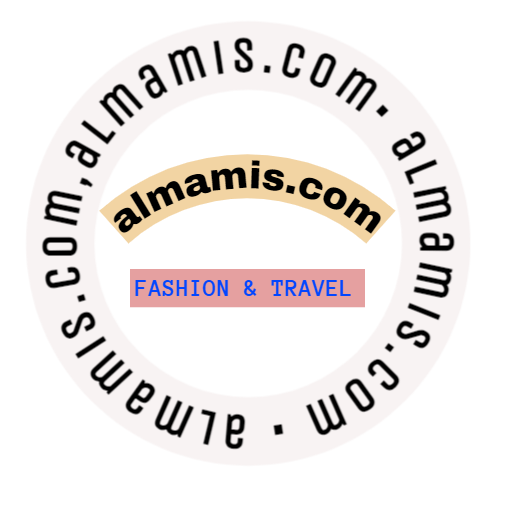

Leave a Reply